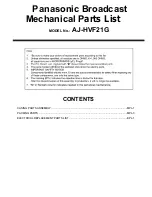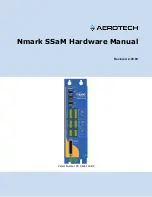
E
N
G
L
I
S
H
15
14
E
N
G
L
I
S
H
Storage: (continued on page 16)
Repairing Air Supply Cylinder Leaks:
The most common leak occurs from a bad air supply valve o-ring. To replace
a valve o-ring you must first remove the bad o-ring then install a new one
and lubricate with a few drops of oil. This o-ring is located on the tip of
your air supply valve. The best valve o-rings are made of urethane.
Urethane o-rings are not affected by high air supply pressures. These
may be purchased from Tippmann
®
or your local paintball dealer.
NOTE: If new valve o-ring does not resolve air supply leak, do not
attempt to repair air supply cylinder. Contact Tippmann Sports, LLC,
your local paintball dealer or a “C5” Certified Airsmith.
• Any Air or CO
2
cylinder that has been exposed to fire or heated to a
temperature of 250 degrees Fahrenheit ( 121 degrees Celsius )
or more must be destroyed by properly trained personnel.
• Use appropriate gas for your cylinder. Only use CO
2
in a CO
2
cylinder and only use compressed air in a compressed air cylinder.
• Keep all cylinders out of the reach of children.
• The Air or CO
2
cylinder should be inspected and hydrostatically
retested at least every 5 years by a DOT licensed agency.
❏
Locate a “C5” Certified Airsmith at
www.paintball-pti.com/search.asp
Air Supply Cylinder Removal: (continued from page 13)
Step 3: Watch the marks on the cylinder and cylinder valve as you
❏
Turn the cylinder approximately 3/4 of a turn counterclockwise
.
This allows the air supply pin valve to close so that no air will enter
the marker.
❏
Point the marker in a safe direction and discharge the
remaining gas in the marker by pulling the trigger until the marker
stops firing (this may take 4-5 shots).
If your marker continues to fire,
the tank pin valve has not closed yet (the tank pin valve could be too
long, because of the variances in tank pin valve parts, each tank
varies slightly on exactly how far it should be turned) and
❏
you will
have to turn the tank counterclockwise
a little further and repeat
this step until the marker does not fire,
❏
then remove the tank.
NOTE: If during this step, you turned the tank and it began to leak
before you pulled the trigger, the tank o-ring should be checked for
damage before reassembly (see Repairing Air Supply Cylinder
Leaks on page 15).
Step 4: After air cylinder is removed,
❏
point & fire the marker in a
safe direction until stored air is completely discharged. NOTE: Before
storing or disassembling be sure to follow
❏
Unloading Your Marker
and
❏
Air Supply Cylinder Removal instructions (see pages 12-
14).
❏
Put the trigger safety in safe mode (see page 4) and Install the
barrel blocking device (see page 2).
Step 2: To remove a charged air supply cylinder:
❏
Eye protection
designed for paintball use must be worn by the user and any person
within range.
❏
Unload Your Marker (follow the instructions on
page 12).
KEEP EXPOSED SKIN AWAY FROM ESCAPING GAS WHEN INSTALLING
OR REMOVING AIR SUPPLY OR IF THE MARKER OR AIR SUPPLY IS
LEAKING. COMPRESSED AIR, CO2, AND NITROGEN GASSES ARE VERY
COLD AND CAN CAUSE FROSTBITE UNDER CERTAIN CONDITIONS.
WARNING
Storage
Before storage
❏
unload and
❏
remove air supply (follow instructions on
pages 12-14).
❏
Put the trigger safety in Safe Mode (see page 4) and
Cleaning & Maintenance
❏
Eye protection must be worn during disassembly / assembly.
To
reduce the chance of accidental discharge: First follow
❏
Unloading
Your Marker and
❏
Air Supply Cylinder Removal instructions on pages
12-14. Do not disassemble this marker while it is pressurized with air.
Do not pressurize a partially assembled marker.
• Follow warnings listed on the air supply cylinder for handling and storage.
• Familiarize yourself with instructions listed on air supply cylinder or
adaptor. Contact the air supply cylinder or adaptor manufacturer with
any questions.
• Do not use any petroleum based cleaning solvents.
• Do not use any cleaning solvents that come in aerosol cans. NOTE:
Petroleum based products and aerosol products can damage your
markers’ o-rings.
• To clean your paintball marker use a damp towel with water to wipe off
paint, oil, and debris. Use Tippmann
®
marker oil or other premium
marker oil to maintain your marker in good working condition.
• Inspect and lubricate the internal drive assembly parts:
❏
the front bolt o-ring,
❏
the rear bolt o-ring,
❏
the linkage arm
and
❏
the drive spring / guide pin (see Marker Disassembly / Assembly,
internal parts removal and installation instructions on pages 16-19).
• Inspect and lubricate the barrel o-ring and the air supply valve
o-ring with a few drops of oil.
• To clean inside the barrel. Depress the feed elbow
lock
and tip out feed elbow
. Insert the cable
squeegee into the breech, then pull the squeegee
through the barrel to remove debris.










































